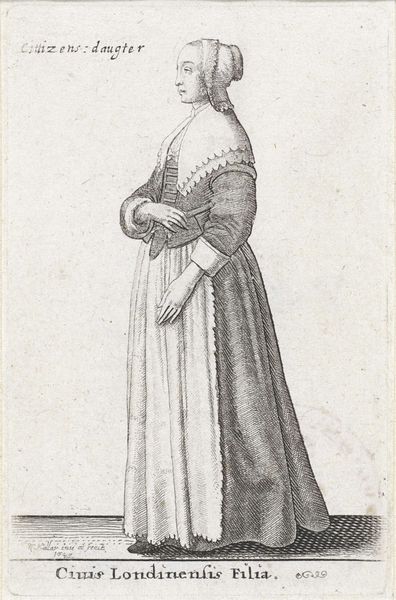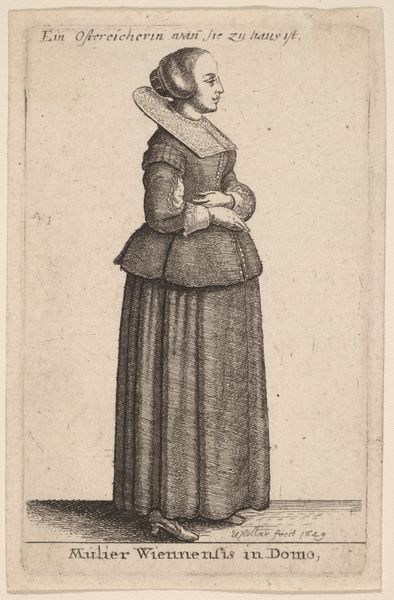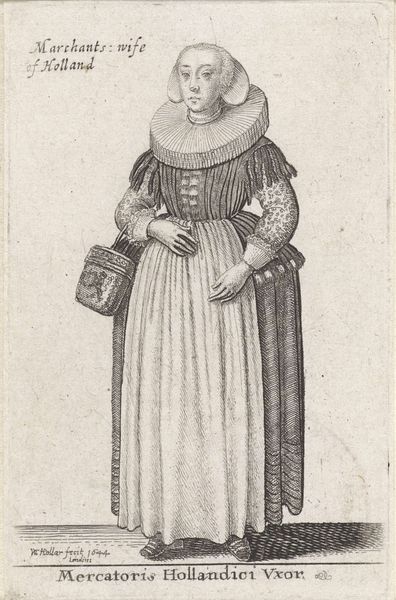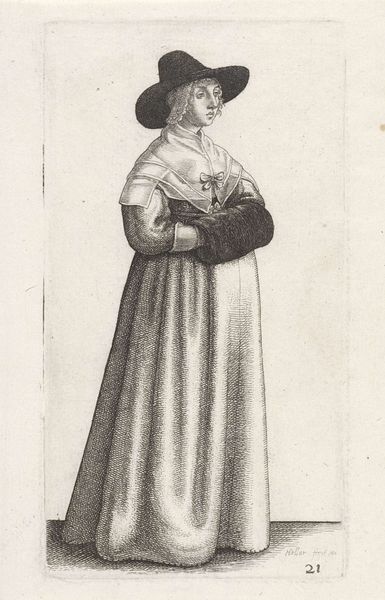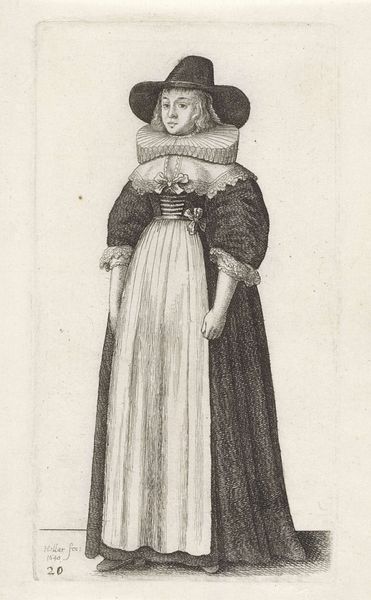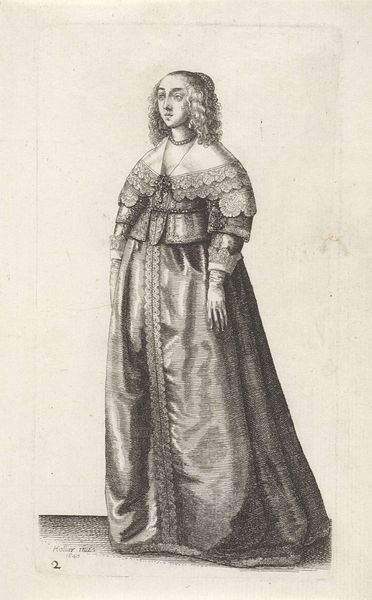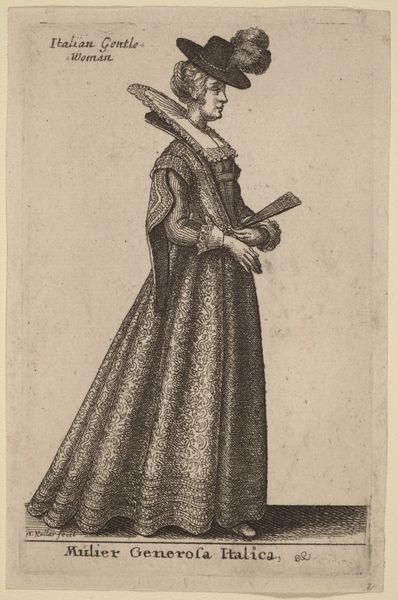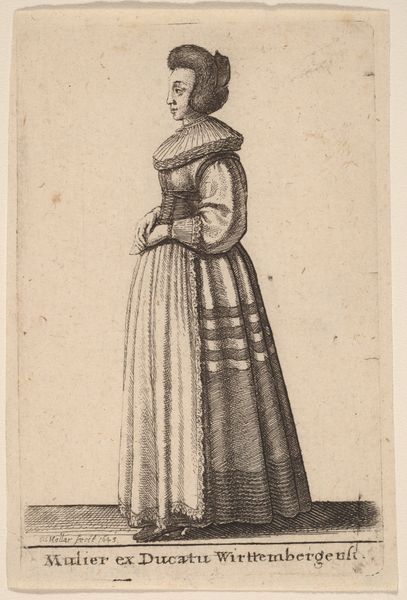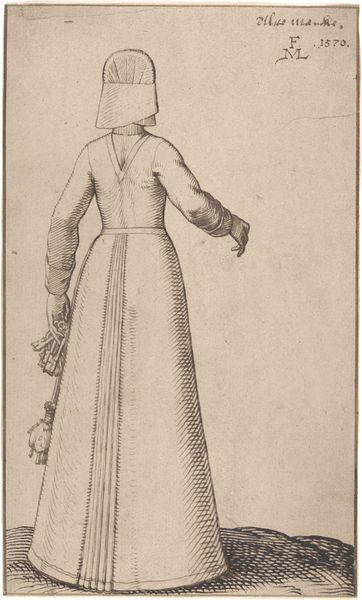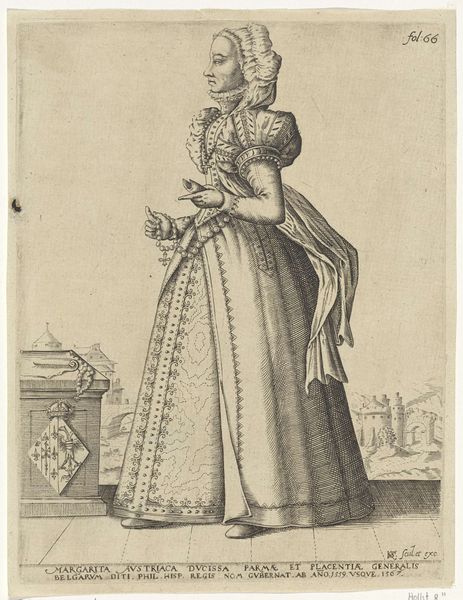
print, engraving
#
portrait
#
baroque
# print
#
old engraving style
#
figuration
#
history-painting
#
engraving
Dimensions: height 90 mm, width 59 mm
Copyright: Rijks Museum: Open Domain
Curator: Here we have Wenceslaus Hollar's "Rustica Gallica," or "Country Woman of France," an engraving from 1643. What strikes you when you first see this? Editor: There's a certain stillness to it, almost a melancholic quiet. The detail is captivating; look at the textures, the tiny dots on her skirt, and the intricate folds of her apron. But there's something about her gaze that feels…heavy. Curator: It is an incredible rendering of textures! I am drawn to how this print transmits enduring aspects of visual culture in the Baroque period: we see the costume as a signifier, something marking her identity within her community, almost like a uniform for rural womanhood. Editor: Exactly! I read this print as a document of class and gender. Her clothing, while detailed, speaks to the labor expected of women in her station. We must recognize that art doesn't exist in a vacuum; this was created during immense social upheaval, with the Thirty Years' War raging on. How does an image like this subtly uphold or challenge power structures of the time? Curator: This gets me thinking about what symbols and visual elements endure. The attire connects to the continuity of peasant dress across centuries and paintings, a form of cultural memory that gives tangible form to communal values, but also suggests the static quality of this lifestyle and the lack of opportunities for mobility. Editor: Right. She's holding what seems to be a basket or bundle, likely filled with something she's collected or produced. Consider how representations of labor often omit the harsher realities or glamorize servitude for the consumption of a wealthier audience. Whose story is really being told here, and who benefits from this narrative? Curator: A thought provoking question! Her averted gaze and unsmiling face suggest to me some resistance. Her expression complicates an easy reading as pure "portrait." It suggests instead something psychological happening within the subject that may disrupt prevailing attitudes about idealized womanhood. Editor: Well, it certainly complicates our understanding. Engaging with the layers of context—historical, social, personal—helps to unveil the potential dialogues embedded in an artwork, centuries later. Curator: Absolutely, considering how even in the absence of color, Hollar's work remains evocative. His lines grant us this woman's lasting presence across time and geography.
Comments
No comments
Be the first to comment and join the conversation on the ultimate creative platform.
